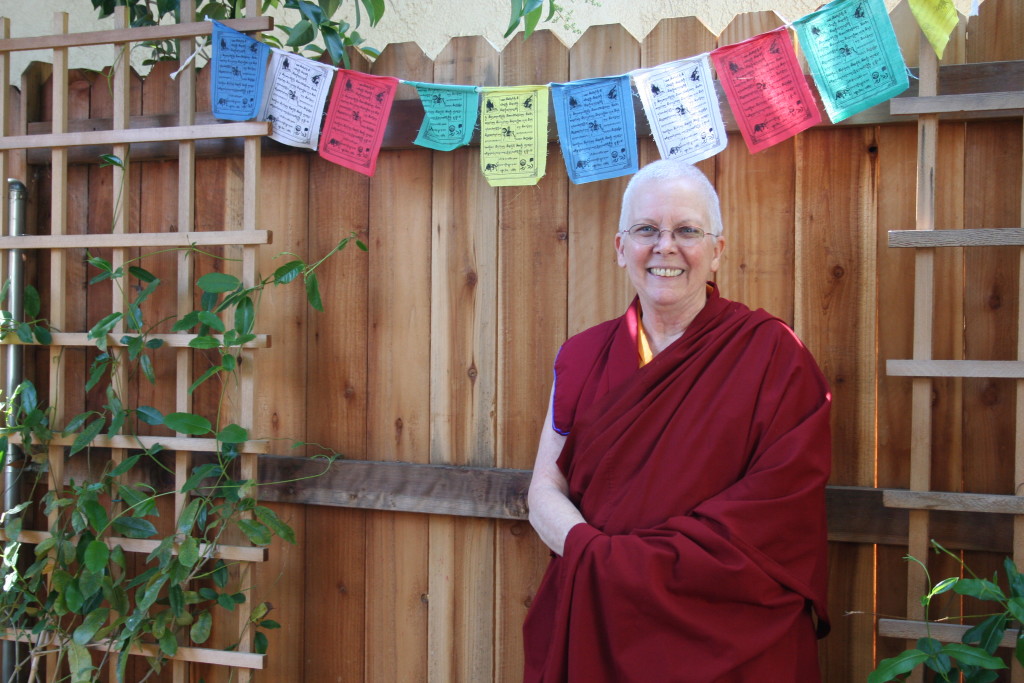“My whole life has been a spiritual journey, trying to find answers. It started when I was about 6 years old. I was riding a horse in our back pasture when I decided to get off and lay down in the grass a little bit. Looking up at the sky it seemed so blue. I wondered how all of this happened. It felt like a very big space. I was raised as a traditional Lutheran but somehow I was never able to get the answers to my questions. In high school, I converted to Mormonism, and it still wasn’t satisfying at the deepest level. I just couldn’t accept a creative God, it didn’t make sense. In college, I became a philosophy major, and later I studied the Agnostics, but again it didn’t make sense. I tried some alternative spiritual paths to understand why things happen the way they do. Is it random? I spent at least 40 Percent of my time trying to understand how the world works. And then I had a dream. In this dream I was in a rickshaw, it was more like a roller coaster. It was made out of wicker. We were speeding down Lombard Street in San Francisco when suddenly it came to a stop and this strangely dressed man got out of the seat behind me. He walked up to me, put his hands together and said: Slow down, you’ll get there faster. Then I woke up. Although it was 4 AM I decided to call my friend. I told him that I had a very powerful dream, which had to mean something. When I described the man to him, he thought the man could be the Dalai Lama. I didn’t know what or who the Dalai Lama was, so he said that we should go to the book store together. When we got to the Buddhist section in the book store, right there facing out was this book called ‘The Art of Happiness’, and it had the picture of the Dalai Lama on the cover. I said: That’s him! At that moment, I started another quest.”
“Becoming a nun was almost like destiny. I went to my first retreat at the Land of Medicine Buddha. There were many monks and nuns. Right away I felt at home. I knew this was where I needed to be. The day we had to go home, I gave my keys to my lama and told him to take my car back to my kids because I was not leaving, I was going to be a nun. But he sent me on my way and told me that he’d talk about it later. That was about one year after I came to the Dharma. I knew I had to do it, it wasn’t really a choice. There was this huge sense of belonging. I was told to wait 5 years, and so after 5 years had passed, I went back and told them again. They thought I had forgotten, but I was already living like a nun. It ended up taking another year before I was ordained. It was a beautiful day. I tried really hard not to cry during the ceremony. It was entirely in Tibetan, which helped. Had it been in English, I probably would have sobbed through the whole thing.”
“I think the mindfulness movement, which is often confused with being Buddhist, is very beneficial for people in general. But we need to clarify the difference between mindfulness practice and Buddhist practice. One can practice mindfulness and not be a Buddhist. I actually have an interfaith group, where I teach mindfulness practice and Buddhist ethics without calling it Buddhism, so they can use the Buddha’s teachings in their own spiritual practice without feeling that they are taking on a different religion. We should be clear with our terms to keep the practice of Buddhism pure in the Dharma as the Buddha taught it.”
“I enjoy the practice of Guru Yoga, going for refuge to the teacher. Without the teacher, there is really no progress on the path, there are no realizations. You need the teacher to be your sounding board. The teacher will know you well enough personally to understand which practices are the most helpful for you and the path. Guru Yoga is core. For me, everything comes down to that, because without my teachers, who have studied and done their own practices, and who have received the teaching from their teachers, I cannot trust myself not to be making things up as I go along. Guru Yoga in Vajrayana lineages is key.”
“Love is a non-judgmental mind that wishes for the happiness and well-being of the other individual unconditionally. It does not contain any sense of attachment. One of the great benefits of having become a monastic is that I can be 100 Percent available for people. For me, giving love means that I can be present. For example, I volunteer at a prison. Love is being able to be with the inmates without judging them, regardless of what their crime was. They too want to suffer less, suffering is what got them there. If I can be present and open, it gives them a moment of safety where real growth can happen.”
“I want to be able to share the Dharma with all walks of life, all spiritual paths. I enjoy sharing the Dharma on a conversational level. I call it ‘Dharma on the Spot’. When I am out in public, someone will always come up to me to ask me questions. Occasionally, I bring some meditation cushions to the park. While I set up, one or two homeless people will come by. They’ll put a dollar in my dana bowl and ask questions, and I end up talking with them about ways to ease their suffering. Making this kind of connection is always very moving.”


